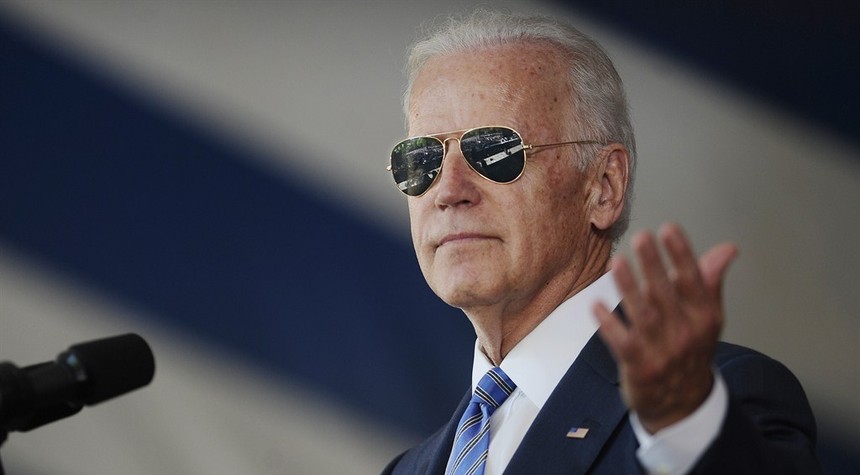In a recent column, Dan McCarthy made a telling observation: “Biden’s approval ratings are anemic. Yet he has reason to be confident that the 2024 electoral map will return him to office.” Joe Biden, McCarthy contends, gained the presidency in 2020 by winning over much of the country’s industrial heartland and North Central region. But he did not achieve that feat because of his mental acuity or personal appeal. He won because those areas that went to him are swarming with Democratic voters, and unless someone can change the electoral map, Biden’s party will prevail again in 2024.
Let me state this point a bit more starkly. Democrats are likely to win the next presidential race because their ideological block is large and cohesive enough, so that no matter whom they run, they can still win in heavily populated regions. In Pennsylvania last November, we not only elected a badly brain-damaged social radical to the U.S. Senate buy we also re-elected a dead Democrat to the House of Representatives. How this happened may be hard for conservatives to understand. As political observers, they may place too much emphasis on the quality of the candidate; and so, they agonize over their own inept nominees for electoral offices.
Supposedly Republicans lost in the Georgia senatorial race because Herschel Walker was inferior as a candidate to the mouthy Black Lives Matter-admirer Raphael Warnock. Had Georgia Democrats been the party running Walker rather than Warnock, however, it’s very unlikely he would have lost. Their ideologically driven voters would have walked barefoot over burning coals to cast votes for this former football hero, and anyone who noted his tongue-tied responses to questions would have been attacked nonstop by the media as racists.
For the Democrats, those they elect to office are there to vote with the party, so it doesn’t really matter if their candidates’ brains are still functioning. The Left elects those who will vote for an agenda. As long as that agenda is advanced, the mental and physical condition of the officeholder is insignificant. Democratic voters are also on board with what their party does to radicalize the country and sow confusion. This includes, among other things, opening our borders to drug cartels and unrestricted immigration, and punishing those who deny that men can become pregnant.
The question is how to launch a successful opposition against this ideological block that is unlikely to change political direction. One possibility is having the Right form a national counter-block, combining, for example, those whom the woke Left has impoverished with the bearers of traditional social principles. Rather than trying to be inoffensive, this counter-block should offer a stark contrast to its opponents. Waffling on social issues won’t work, as Dr. Mehmet Oz’s failed campaign against Fetterman in Pennsylvania showed.
But it is equally important to present one’s positions cogently, while underscoring the other side’s descent into lunacy. And while it would be unwise for members of the counter-block to run in Nassau County, New York with exactly the same positions as someone seeking office in Georgia’s hill country, the Right should aim at showing the same degree of ideological conformity as the Left.
And it should be as divisive as its adversaries. Our counter-block should ridicule mercilessly the celebration of transgender women that took place at the White House last week. It should highlight whenever possible grotesque displays of wokeness as the social and cultural face of the Democratic Party. It should also pounce on such Democratic enormities as distributing government jobs as a victimological spoils system (aka equity). Our confrontational political Right should also continue to point out that Biden’s higher taxes on “the rich” will be taken out of the pockets of working-class consumers, who will be forced to pay higher prices for essential goods.
This Right should heed Trump’s advice at the recent Conservative Political Action Conference: Republican governors and Republican legislators must insist that all ballots be cast on Election Day in designated precincts by voters who can properly identify themselves. Democratic dominance cannot be ended unless we can hold honest elections, without vote harvesting, early voting, and other means of dragging out elections for months in circumstances that allow for massive fraud.
Finally, our right-wing block should treat with utter contempt media accusations of racism, sexism, homophobia, and transphobia. These attacks from the Left’s kept opposition should not be allowed to influence the attitudes and programs of the Right. Florida Governor Ron DeSantis was perfectly justified, for example, when he refused an invitation from the rabidly leftist women on “The View” to appear on their program. Why would any self-respecting governor expose himself needlessly to insults?
The Right must pursue an electoral strategy that is comparable to that of its adversaries. It must feature a national agenda that distinguishes it morally and socially from the other side, and it must mobilize Americans to support its anti-woke, conservative program. And it must stop hiding behind gibberish about “common ground.” Democrats don’t win by seeking consensus. They win elections by denouncing the other side as homophobic and racist.













